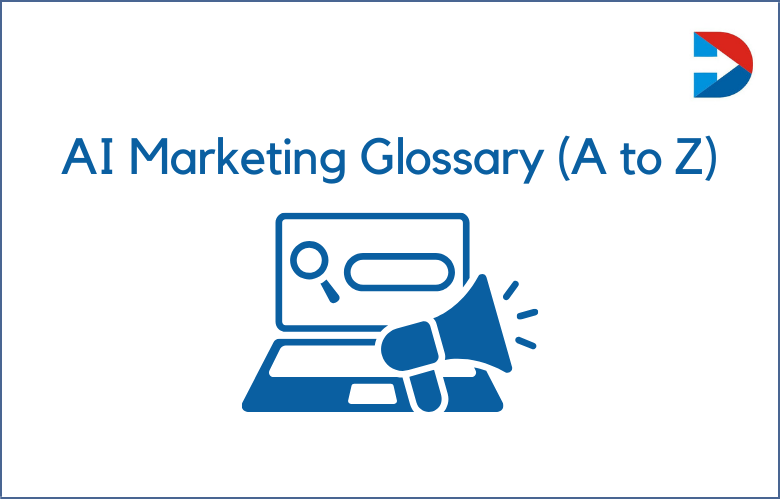
In the current digital age, having a social media presence is essential for any business.
But to make the most of your social media accounts, it’s essential to understand how social media algorithms work.
Knowing how algorithms affect the content you post can help you maximize your reach and get better results from your marketing campaigns.
Understanding Social Media Algorithms
What is an Algorithm?
An algorithm is a set of instructions that tells a computer or other device how to perform a task. In the case of social media algorithms, these instructions tell the platform which posts to show you in your feed and when.
These algorithms aim to give users the most relevant content possible; you won’t see a range of people or brands who don’t match your interests.
The Basics of Social Media Algorithms
Social media algorithms rely heavily on data from user interactions with posts and profiles.
This includes things like likes, comments, shares, follows, etc. By collecting this data, the algorithm can determine who you will most likely engage with and prioritize those profiles in your newsfeed.
For example, you follow a lot of celebrity accounts but rarely interact with them (i.e., liking or commenting on their posts).
In that case, those posts will appear lower in your feed than those from people you actively engage with on social media.
This also works in reverse; if you frequently interact with certain accounts (e.g., by liking their posts or watching their stories), then those accounts will appear higher up in your feed than those whose content you rarely engage with.
This is why it’s essential to stay active on social media if you want your content to be seen—by engaging with others’ content regularly, yours will be more likely to appear at the top of people’s feeds!
While these algorithms aren’t always publicly available, some general principles are known to influence what content is featured on each platform.
Uncovering the Secrets of Social Media Algorithms
Social media algorithms are one of the great mysteries of the internet age. We know that they exist, but what exactly do they do? How do they decide which content is seen by which users? And why does it seem like some posts get more visibility than others? We’ll look at how social media algorithms work and how you can ensure your content gets seen.
The Basics of Social Media Algorithms
A social media algorithm is a group of rules and regulations to determine what content is displayed in a user’s feed.
For example, suppose you’re scrolling through your Facebook newsfeed. In that case, the algorithm will decide what posts appear first based on factors such as who posted it, when it was published, how often you interact with that particular person or page, etc.
These algorithms constantly adapt to provide users with the most relevant content possible.
How You Can Leverage Algorithms for Your Content
The key to successfully leveraging social media algorithms in your favor is understanding how they work.
Knowing which factors influence what appears in users’ feeds can help you ensure that your content gets seen by more people. Here are some tips for optimizing your content for maximum visibility:
Post regularly – Regular posting helps keep your content visible and increases engagement from followers who may have missed an earlier post.
Use hashtags – Hashtags can be used to categorize posts so that they appear in search results for related topics or keywords. This can help boost visibility significantly.
Engage with other accounts – Engaging with other reports (by liking their posts or commenting on them) helps increase your visibility as well as theirs!
Utilize analytics tools: Tools like Google Analytics can give you insights into how users engage with your content, allowing you to adjust accordingly.
Engagement Rate
A critical factor in determining whether or not a post appears in someone’s feed is its engagement rate.
This means that the more likes, comments, and shares a post receives, the higher it will appear on people’s feeds.
Because of this, it’s essential to encourage followers to engage with your posts as much as possible if you want them to see your content.
User engagement is critical in determining which posts appear in your feed.
If users have been interacting with a post by liking, commenting, or sharing it, then the algorithm will recognize this as an indicator that the post is popular and should be moved up in the rankings.
Suppose you want your post to be seen by more people. In that case, it’s essential to encourage user engagement by asking questions or including interactive elements such as polls or quizzes.
Hashtags and Relevance
Hashtags are an integral aspect of social media culture, but they can also be used strategically by businesses looking to increase their visibility.
By using hashtags relevant to their industry or target audience, businesses can ensure that their posts are seen by people interested in their products or services. Many platforms prioritize posts with hashtags over those without them.
Post Quality and Timing
Post quality is another major factor when it comes to social media algorithms. Posts with higher-quality imagery and well-written copy perform better than low-quality images or text that don’t add value for the user.
It’s also important to consider when you post – timing can significantly impact how much engagement your post receives and, thus, how high up it appears on people’s feeds.
Generally speaking, posting during peak hours (when most of your followers are online) will increase your posts’ chances of getting more engagement.
Relevance to User
Another critical factor in determining which posts appear higher in the rankings is relevance to the user.
The algorithm takes into account things like who posted it (friends vs. strangers), what kind of content it contains (text vs. video), and how often similar content has appeared previously in their feed (frequent vs. rare).
All these elements contribute to whether or not a post will make it onto a user’s feed.
Time Since Posting
Time since posting also plays a vital role in deciding which posts get seen first. Generally speaking, newer posts are prioritized over older ones because they are likely to be more relevant and exciting for users at that moment in time.
This means that if you want your post to get seen quickly, it’s best to post it when most people are online — generally during peak hours like early morning or late afternoon/evening.
Social Media Algorithm Types
Social media algorithms are techniques used to measure the engagement and reach of posted content. They are designed to improve the user experience by personalizing the content that users encounter. Standard social media algorithm types include collaborative filtering algorithms, content-based algorithms, natural language processing algorithms, and deep learning algorithms.
Collaborative filtering algorithms generate recommendations based on user behavior patterns. These patterns are observed over time and involve detailed tracking of user interactions with content. For example, if a user consistently interacts with posts about technology, then an algorithm might recommend similar posts about tech topics in the future. Collaborative filtering can generate personalized feeds for different users, tailor search results, and improve overall system efficiency.
Content-based algorithms use metadata such as topic tags and keywords associated with posts to recommend similar content to the user. This algorithm relies heavily on a semantic understanding of topics and phrases to efficiently match related content.
Natural language processing (NLP) algorithms are often used with content-based algorithms to provide more accurate recommendations based on sentiment analysis or other text-related features.
Deep learning is a machine learning stream involving complex artificial neural networks for pattern recognition tasks such as facial recognition or object detection in images. Deep learning has been applied to social media platforms like Facebook, Instagram, Twitter, and YouTube to detect suspicious activity or inappropriate posts that violate platform rules. Deep learning models can also be used for automated moderation tasks such as post flagging or comment removal for offensive language or hate speech.
Social media algorithms have become increasingly important as platforms strive for more personalized user experiences while ensuring their online safety and security policies are always upheld. Algorithms can quickly analyze vast amounts of data while providing better-targeted recommendations that improve user satisfaction rates over time.
Social media algorithms are essential systems that dictate the content that users see when they visit different platforms. With the help of complex algorithms, social media networks can determine what kind of content to show its users and how it is presented. This system allows users to enjoy a personalized experience using various social media sites.
The most popular social media algorithms are recommendation and ranking algorithms. Recommendation algorithms use data from user interaction with the content to suggest new items based on the user’s interests and behavior. Ranking algorithms, on the other hand, prioritize content based on relevance, timeliness, or popularity.
One example of a recommendation algorithm is Netflix’s “What’s Next for You?” feature, which suggests movies and TV shows based on what the user has previously watched or rated highly. Similarly, Amazon uses its algorithm to recommend products to customers based on past purchases and browsing history.
Ranking algorithms are another algorithm commonly used by social media platforms such as Facebook and Twitter. These algorithms prioritize posts to ensure users see relevant content from their friends or publications they follow. For example, Facebook uses its EdgeRank algorithm to determine which posts appear first in a user’s newsfeed.
The algorithm considers post relevancy, source credibility, date published, and more before deciding which positions will push to the top of a person’s newsfeed.
Social media algorithms ensure people have a personalized experience each time they log onto one of these platforms. These networks can deliver tailored content to users’ interests and preferences using complex data analysis techniques and recommendation and ranking systems.
Conclusion
Social media algorithms play an essential role in determining which content appears in users’ feeds – so understanding how these algorithms work is crucial in ensuring that yours stands out from the crowd!
By focusing on post quality, using relevant hashtags, encouraging followers’ engagement, and correctly timing posts, businesses can maximize their reach and get better results from their marketing campaigns on social media platforms like Facebook and Instagram.
Social media algorithms can seem daunting at first glance, but once you understand how they work, you can use them strategically to increase the visibility of your posts and reach more people with your message!
By focusing on user engagement, relevance to the user, and timing when you post content, you can ensure more people see your message than ever!
Understanding algorithmic behavior on social media networks can help set your business apart from competitors while still providing valuable information for customers. So don’t be afraid of algorithms – embrace them!



